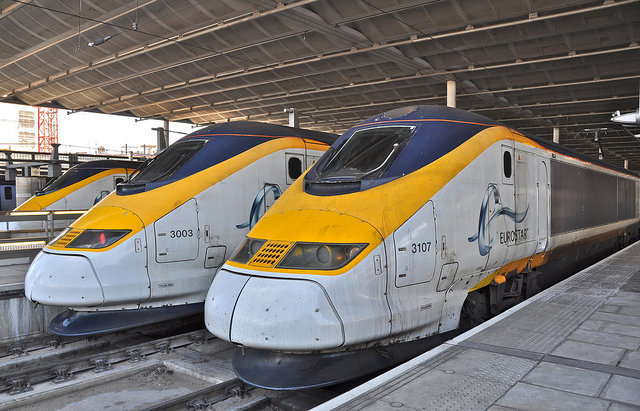Improving Our Railways: A Key Part of Rebuilding America
Share

Investing in our infrastructure is vital to creating and supporting manufacturing jobs. But infrastructure investment also is key to ensuring America remains competitive with the rest of the world — and the folks at CityLab point out that there’s one major piece of infrastructure in which the United States has truly fallen behind
Virtually every wealthy nation in the world has invested in a high-speed rail network—with the striking exception of the United States. From Japan to France, even from Turkey to Russia, trains travel through the country at speeds of 150 miles per hour or above, linking city centers and providing a desirable alternative to both air and automobile travel. Meanwhile, outside Amtrak's 28 miles of 150-m.p.h. track in rural Massachusetts and Rhode Island, the American rail network is largely limited to speeds of 110 m.p.h. or less.
So why haven’t we taken action to upgrade our railways? The federal government has failed to act.
As CityLab explains, much of the decisions about transportation projects have been left to the states. In doing so, the federal government has created a system in which little transportation work can be done in the national interest. If we truly want to improve our national infrastructure, we need Washington to act.
This wasn’t always the case, of course. Back in the 1950s, President Dwight Eisenhower and Congress worked together to implement a plan to build the Interstate Highway System, connecting cities across the country and helping promote prosperity nationwide.
Now, many of those roads are in dire need of repair, and we should take action to fix them. It's also important that the federal government take action to improve our railways, as CityLab notes:
With falling automobile vehicle miles traveled, rising transit use, and booming city centers, we need new ways to connect our cities. More highways are not the answer, not only because they pollute the environment and destroy the neighborhoods they pass through, but also because they're relatively slow and become congested almost as soon as they're built. With a growing population, the country needs an expanded transportation system. The United States must invest in clean, neighborhood-building, and congestion-relieving trains, but we cannot expect states to pick up the slack of an uncertain federal government.
It is time for the President and Congress to work together to pass a long-term infrastructure spending plan, and one that includes funding for all infrastructure — from roads to bridges to ports to water systems to railways.
Tell your elected officials to get serious about creating manufacturing jobs by rebuilding our nation’s infrastructure.
